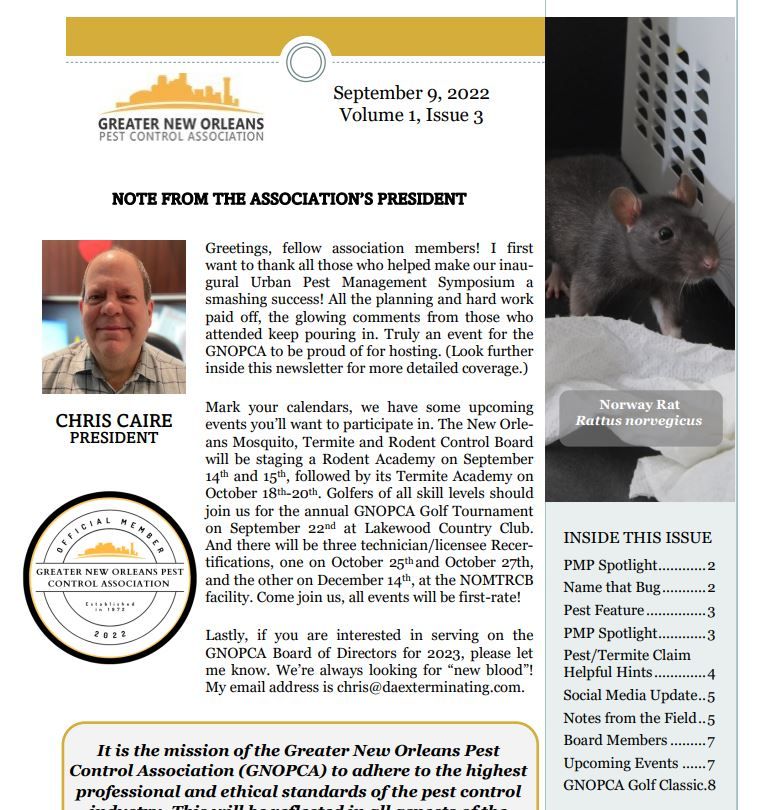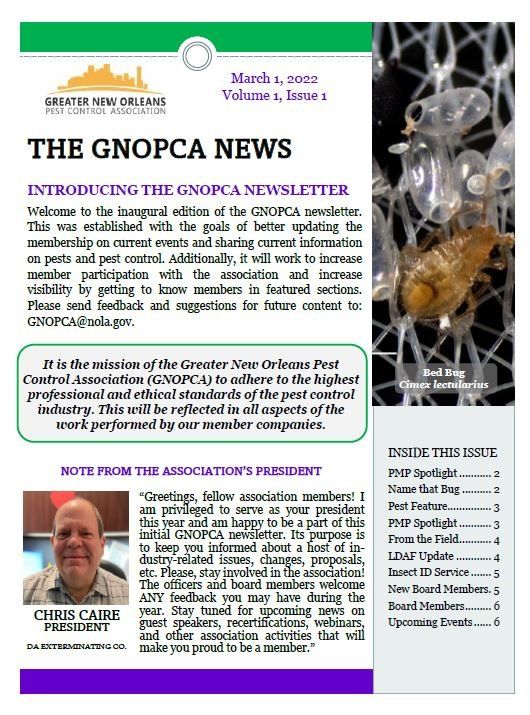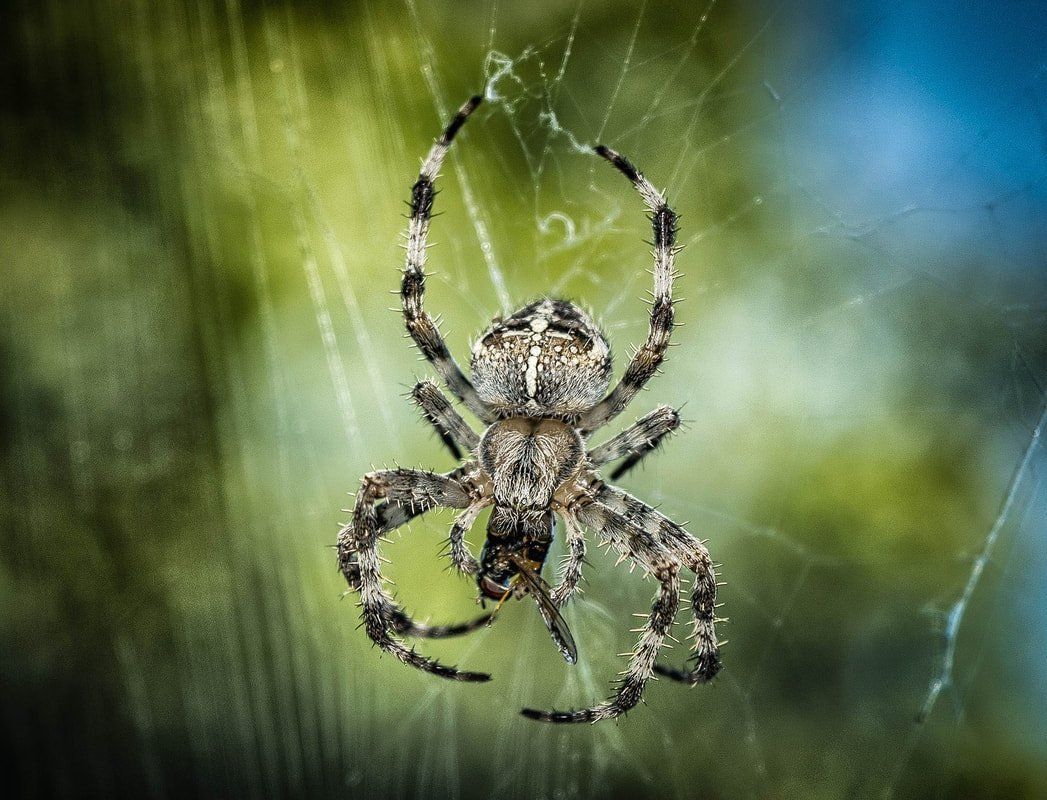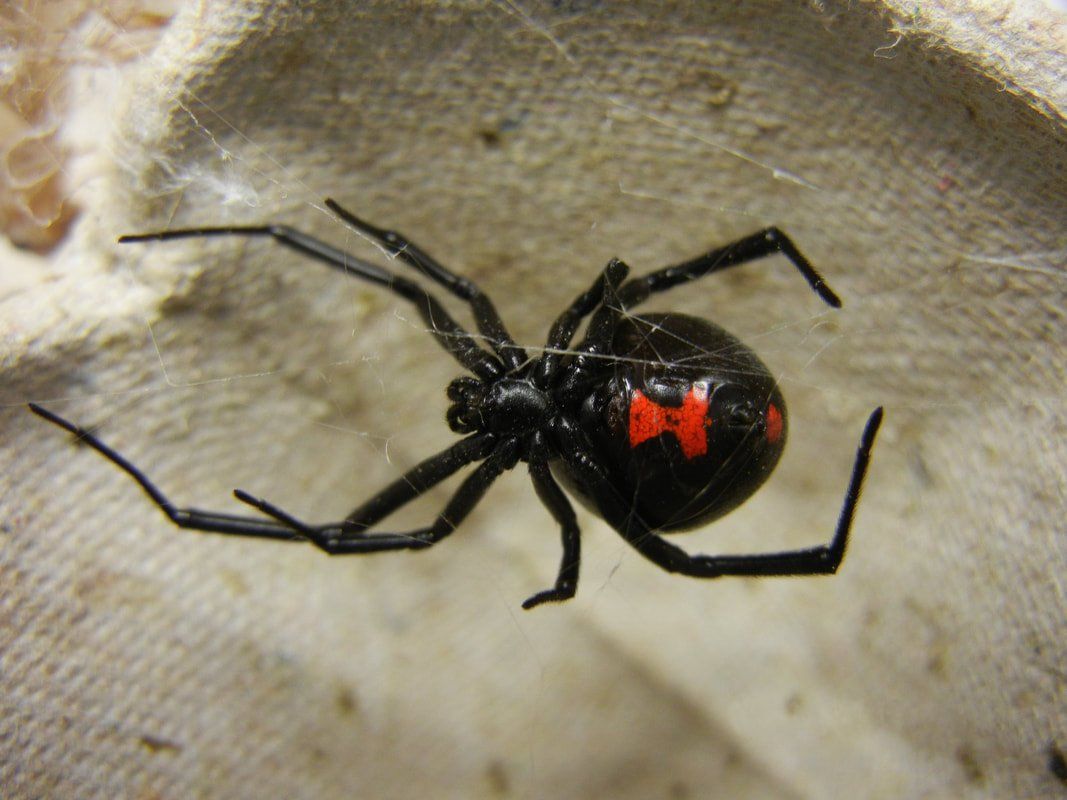DA Exterminating Co., Inc. | 4440 Wabash Street Metairie, LA 70001
📞(504) 888-4941
DA Exterminating Co. of St. Tammany, Inc. | 13433 Seymour Myers Blvd., Ste 2 Covington, LA 70433
DA Exterminating Co. of Houma, Inc. | 202 Enterprise Dr. Houma, LA 70360
Blog Layout
The Keys to Winter Pest-Proofing
Admin • Dec 14, 2018
One noticeable change in the outdoors as winter approaches is the reduction of flying insects such as mosquitoes, flies, and bees. We associate these pests with summer and fall, a nuisance to outdoor activities, and are thankful that the colder weather brings relief from their stings and bites. But a lack of flying pests does not mean a lack of all pests during the winter.
Whereas mosquitoes and bees were flying overhead in the summer, mice, cockroaches and spiders could be crawling underfoot during the winter. These pests are seeking shelter from the cold, and unfortunately our warm homes seem cozy to them too. It is important to take preventative measures to keep pests out because they can cause more hazards than just cobwebs in the corner. Rodents are known to carry diseases such as salmonella and hantavirus; certain spiders can bite, causing serious side effects; and cockroaches can be a trigger for asthma and allergies.
The National Pest Management Association (NPMA) has several tips that every homeowner can use to help prevent these winter pests from gaining access to the home.
- Seal cracks and holes on the outside of your home to help prevent rodents from getting inside. Be sure to check the areas where utilities and pipes enter the home. A mouse can fit through a hole the size of a dime.
- Replace loose mortar and weather stripping around the basement foundation and windows.
- Store firewood at least 20 feet from the home. Mice and ants can make their nests in wood piles and easily gain access to your home if the pile is nearby.
- Keep storage areas well organized, and store boxes off of the floor, as rodents can hide in clutter.
- Eliminate all moisture sites, including leaking pipes and clogged drains. Extra attention should be paid to kitchens and bathrooms as these areas are particularly vulnerable to cockroach infestations.
- Install door sweeps and repair damaged screens in windows.
- Screen vents to chimneys. Keep attics, basements and crawl spaces well ventilated and dry.
Winter brings enough worry about home damage with wind, snow and frost. Following these tips will help reduce the likelihood of your home experiencing other seasonal problems due to pests. When winter pests are kept outdoors, your home becomes a healthier place to host holiday parties and spend time with family, and that is what the season should be all about.
If you suspect you have a pest infestation, give us a call at 800-650-PEST.

By Lorenz Marsh
•
14 Jun, 2022
Always proud to be a member of PCT Magazine’s “Top 100” companies ( by annual revenue) in America. This is Ed, Jed and me accepting the award in Orlando the other night. Thanks to our wonderful DA team at all 3 DA branches and our loyal customers, it takes everyone to achieve success! (David Cherry, our longtime GM in Houma, left before we grabbed this photo…sorry David!) — Chris Caire, Jed, and Ed Reynolds.
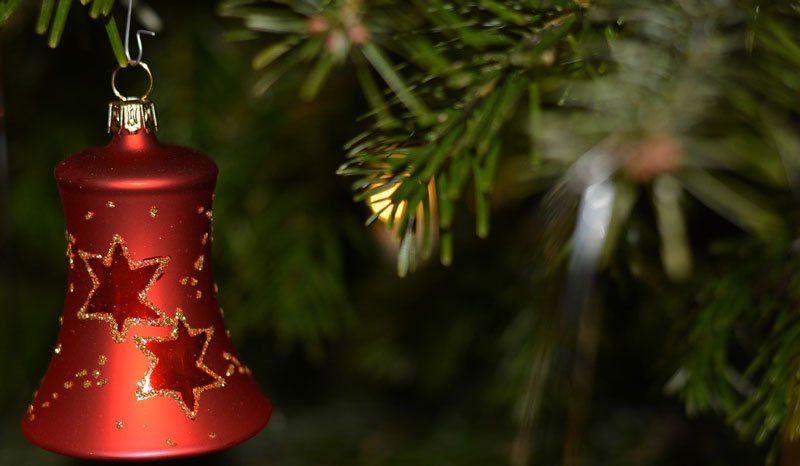
By Admin
•
06 Dec, 2018
When the holidays come to an end, it will be time to store the trees and decorations until Christmas 2019. Safeguard all of your favorite holiday decorations so they are free of pests while sitting in the attic, basement or other storage space until the holiday season comes around next year. Christmas decorations provide harborage and, in some cases, food for various kinds of pests, especially rodents. So we have assembled some decoration storage tips to prevent surprises next year when you open your decoration containers. to seal them in plastic containers if you must save these from 1) Dried berries, seeds and other natural materials are especially attractive to mice. The best idea is to seal them in plastic containers. Discard natural decorations after using each year including real gingerbread houses, candy canes and natural wreaths. 2) Cardboard can be a favorite nesting material for rodents, so don’t store artificial Christmas trees in cardboard; instead, use plastic sealable bags or containers. That goes for all other Christmas decorations. 3) Examine all decorations for any that are broken or that you won't use next year and discard them. 4) Wash linens and other fabrics and store in sealed plastic bags to prevent moisture. 5) Before loading containers into a garage, basement, attic or other storage area, examine them and clean thoroughly to remove any debris that may be harborage areas for mice. 6) Store holiday candles separately. The scent from a candle can attract unwanted guests. Placing the candles in an area that is not exposed to extreme heat (e.g., attics or sheds) will resolve this problem. Wrap candles in plastic to prevent them from melting together or transferring color in warm conditions. If you follow these tips to properly pack and store your decorations, not only will you be more organized for Christmas 2019, but you will reduce the possibility of pests trying to share next year's holiday with you! To get more information on pest control services in New Orleans, contact the experts at DA Exterminating today by calling 800-650-PEST . Wishing you and your family a pest-free New Year!
By Admin
•
14 Nov, 2018
DA Exterminating is proud to present these easy pest prevention tips to keep pests from taking up residence in your New Orleans-area home.
By Admin
•
01 Nov, 2018
The time it takes to check your home before winter arrives will pay off in preventing pest problems. Here are five things you can do!
By Admin
•
17 Sep, 2018
t’s that time of year when certain pests seek a warm place to overwinter and this usually means YOUR HOME! We’ve assembled some tips to prevent these critters from moving in with you. Vacuuming is the best way to eliminate the insects once they are inside. Before the winter months approach, seal gaps around windows and doors, including garage doors. The best time for this is during the summer after pests have left their overwintering site, and before they come back for the next season. Look for areas where pipes and electrical or cable lines enter the building. Gaps around these areas should be sealed. Look for openings around soffits, eaves, attic fans, windows and vents in the attic used for ventilation. Many times these areas are not screened, allowing overwintering pests inside. Be sure screens on windows are in good repair and have no openings. Inspect chimneys. Be sure the damper is closed when not in use, and know that if you’re dealing with a wood-burning fireplace, lighting a fire may discourage the insects from using the chimney as an entry point. Tell customers that using “bug bombs” to treat the inside of a house can backfire — they may end up with dead insects still inside the walls, which then attract secondary pests, such as carpet beetles. Concerned about Fall Invaders? Call us today. 800-650-PEST .
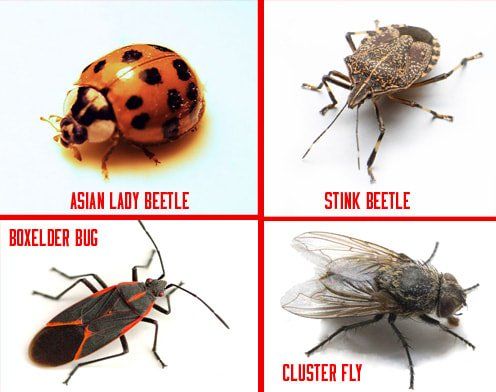
By Admin
•
12 Sep, 2018
As the weather cools down in the fall, many pests look for suitable harborages in which to spend the winter. These annoying pests do not bite or cause harm to you but they are nuisances and are best prevented using the tips in our September 15 blog. (Watch for it!) The following pests are likely to attempt to enter your home in the fall. Asian Lady Beetle Also called ladybirds or lady beetles, depending on the region, the main difference between these two insects is the size of the two bugs. Asian ladybeetles are larger in size. Ladybugs have a head that is all black with little white cheeks. They were introduced into the United States in 1988 for the purpose of reducing native aphid populations. Since 1988, they have spread throughout North America, in most places displacing the native lady beetle populations to become the dominant beetle in the insect family. The best way to get rid of ladybugs is to remove them physically using a vacuum cleaner Stink Bug The brown marmorated stink bug is more likely to invade homes in the fall than others in the family. The bug survives the winter as an adult by entering houses and structures when autumn evenings become colder, often in the thousands. In one home, more than 26,000 stinkbugs were found overwintering. Adults can live from several months to a year. They will enter under siding, into soffits, around window and door frames, chimneys, or any space which has openings big enough to fit through. Once inside the house, they will go into a state of hibernation. They wait for winter to pass, but often the warmth inside the house causes them to become active, and they may fly clumsily around light fixtures. The stink bug's ability to emit an odor through holes in its abdomen is a defense mechanism meant to prevent it from being eaten by birds and lizards. However, simply handling the bug, injuring it, or attempting to move it can trigger it to release the odor. Boxelder Bug Boxelder bugs get their common name from the fact that they are often found on and around boxelder trees. This species is native to the western states, but can be found from eastern Canada throughout the eastern United States, and west to eastern Nevada, wherever boxelder trees are found. Boxelder bugs are primarily a nuisance pest as they enter structures, including homes, sheds and garages to overwinter. Overwintering adult boxelder bugs emerge from hibernation in late March to early April when the boxelder buds open. During this time, the adults leave their overwintering sites to return to their host trees for the warmer months. Cluster Fly Cluster flies make their debut in the autumn when they fly to the sunny sides of homes in search of over-wintering sites and may be found flying about inside, often in great numbers, throughout the winter. These flies are not reproducing within the structure, but become active on warm days and crawl out of wall voids and attics in a confused attempt to go back outside. Cluster flies will not damage your home. Occasionally, the flies may leave small dark-colored spots of excrement on windows and walls, but they are not known to carry any diseases of medical importance to humans. In addition to the ‘clustering’ on the sunny exterior of buildings in the fall, the flies will gather in large numbers at windows within the home on warm winter days. The flies are typically sluggish in flight and can be easily swatted or captured. If you’re bugged by any of these, give us a call – 800-650-PEST .
Contact Information
DA Exterminating Co. of St. Tammany, Inc.
13433 Seymour Myers Blvd., Ste 2 Covington, LA 70433
All pictures, images and info contained in this website do not belong to any other parties other than Thryv and/ or DA Exterminating.
Content, including images, displayed on this website is protected by copyright laws. Downloading, republication, retransmission or reproduction of content on this website is strictly prohibited. Terms of Use
| Privacy Policy

